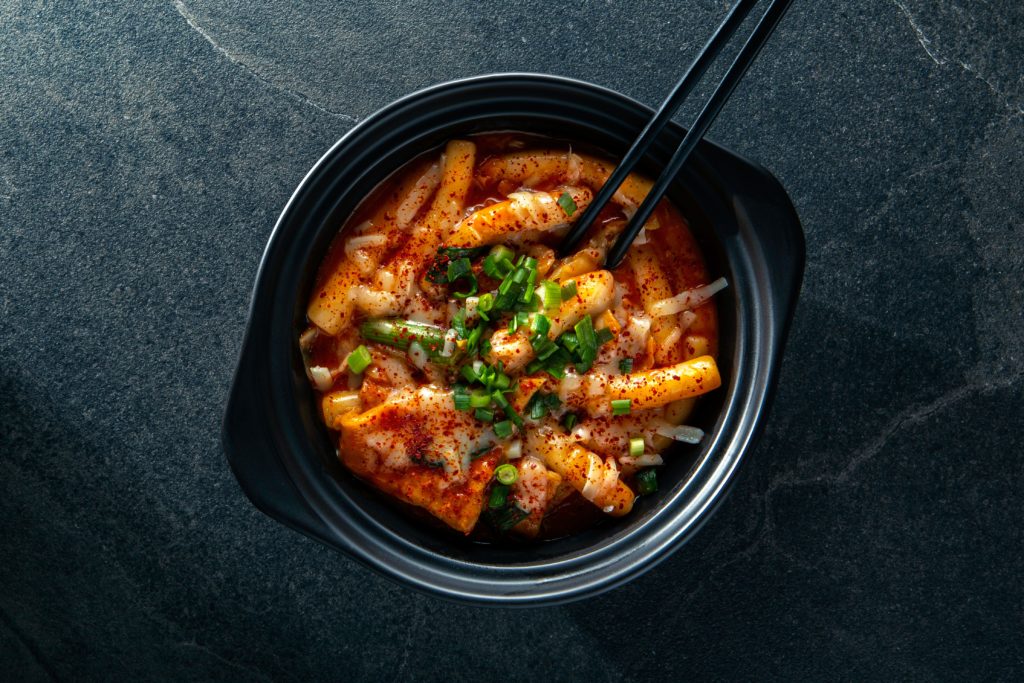
From the mesmerizing K-Dramas and pulsating beats of K-Pop to the culinary wonders that grace their tables, Korea offers an enchanting experience for explorers. Korean cuisine stands out for its remarkable diversity and is celebrated for its bold, vibrant, and robust flavors. If you’re a fan of all things Korean and yearn to delve deeper into their culinary treasures, look no further – this is the ultimate guide to satiate your curiosity and delight your taste buds.
From the fiery embrace of Kimchi, a tantalizing fermented cabbage delicacy, to the delicate folds of Mandu, savory dumplings that dance on the palate, Jaya Travel & Tours has curated a gastronomic journey that brings you closer to the heart of Korean cuisine!
Table of Contents
A Guide To Korean Cuisine By Region
Northern Region
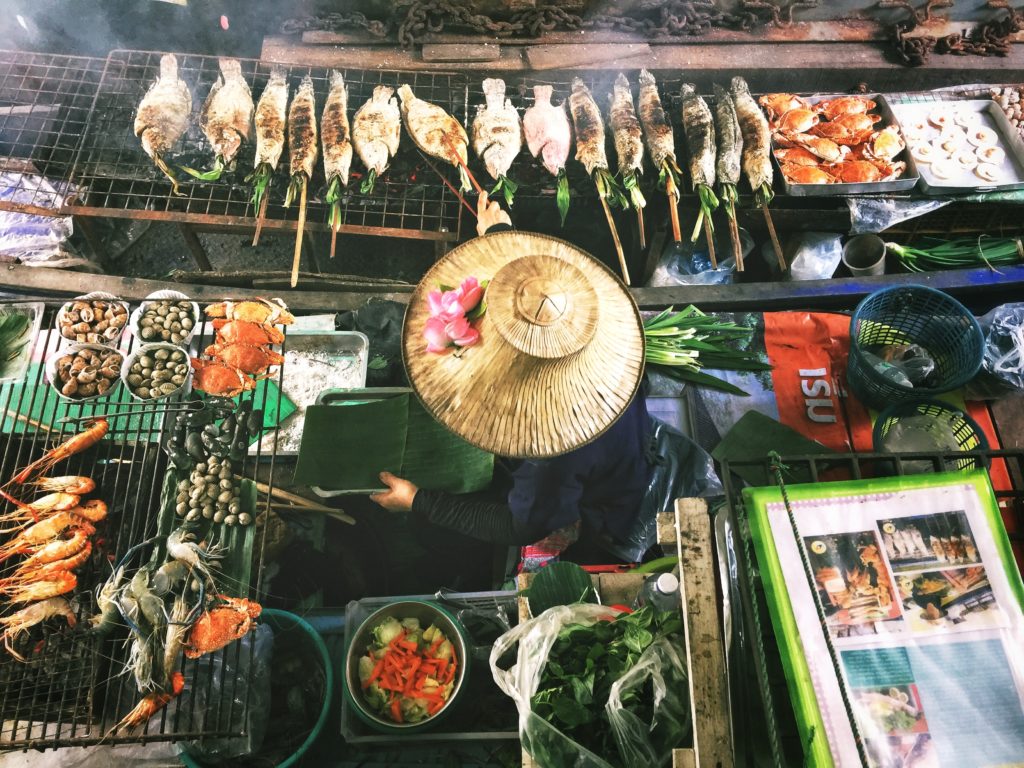
Korean cuisine in the Northern Region boasts a rich and distinct culinary heritage shaped by its unique geographical features, historical influences, and resourceful cooking methods. Embracing colder temperatures and a coastal location, the region has mastered the art of preservation and fermentation to ensure a diverse array of flavorful dishes throughout the year.
Seafood takes center stage, with fish, clams, squid, and seaweed infusing soups, stews, and side dishes with savory and briny flavors. Among the region’s prized delicacies is the renowned “sundae,” a distinctive blood sausage made by combining seasoned meat with glass noodles.
Noodles hold a special place in Northern Korean cuisine, exemplified by the celebrated “Pyongyang naengmyeon,” a refreshing dish featuring cold buckwheat noodles served in a tangy, flavorful broth with various toppings.
The dining experience is further enriched by an assortment of banchan, or side dishes, which may include a diverse range of preserved vegetables and seasoned fish showcasing the region’s diverse gastronomic offerings.
Central Region
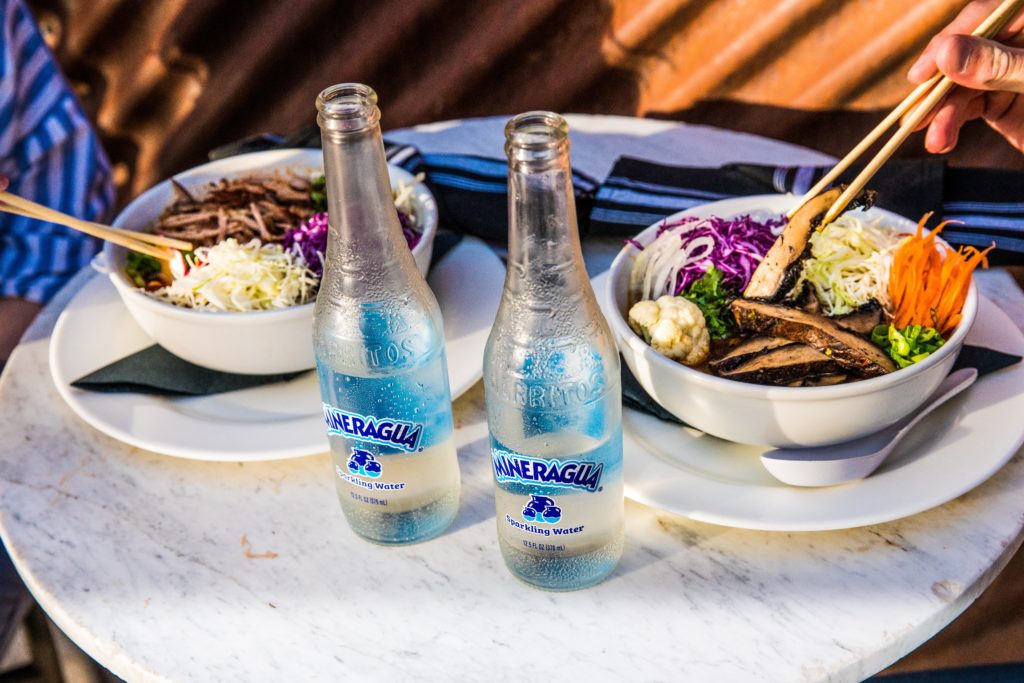
Korean cuisine in the Central Region showcases a delightful fusion of flavors and culinary traditions influenced by its geographical location and historical significance. Known for its fertile farmlands, the Central Region places a strong emphasis on using fresh and locally sourced ingredients, making it a haven for farm-to-table dishes.
Central Korean cuisine features a variety of stews, such as “tteokguk,” a flavorful rice cake soup typically enjoyed during the Lunar New Year celebrations.
“Japchae” is also popular, which includes traditionally made glass noodles called “dangmyeon,” also known as sweet potato starch noodles. These chewy and translucent noodles are the foundation of the dish and give it a unique and delightful texture.
“Jjimdak” is also a savory and mildly spicy braised chicken dish that boasts a unique blend of flavors, making it a delightful culinary experience.
Southern Region

Korean cuisine in the Southern Region, known for its milder climate and abundant coastline, offers a rich variety of ingredients that contribute to its distinct culinary offerings. Fresh catches from the sea, including various fish, shellfish, and seaweed, are prevalent in many dishes.
Popular meals include “Haemul Jjigae,” a hearty and spicy seafood stew, and “Ganjang Gejang,” a marinated crab dish famous for its delicate yet rich flavors.
Southern Korean cuisine is also celebrated for its vibrant street food culture. Bustling markets and street stalls offer a range of delectable snacks, such as “Odeng,” fish cake skewers served in a warm broth, and “Hotteok,” sweet and chewy pancakes filled with a delectable mix of nuts and sugar.
This culinary diversity makes the Southern Region a captivating destination for food enthusiasts seeking to explore the rich and flavorful traditions of Korean gastronomy.
A Guide To Popular Korean Dishes
Kimchi
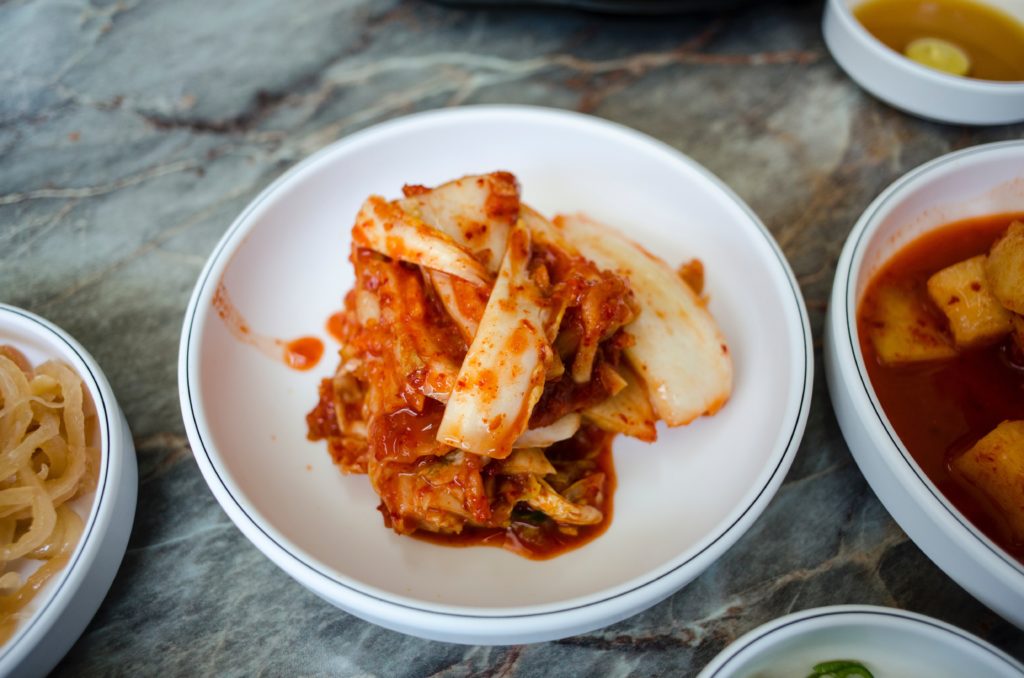
Indeed, “kimchi” is arguably the most renowned Korean food, and it’s likely you’ve come across it before. This quintessential dish, most closely associated with Korea, is made by fermenting vegetables like Napa cabbage, radish, green onions, or cucumber, and is seasoned with a delightful blend of ingredients. This beloved condiment also takes center stage in a variety of well-known Korean meals, such as kimchi stew, kimchi soup, and kimchi fried rice.
Bibimbap
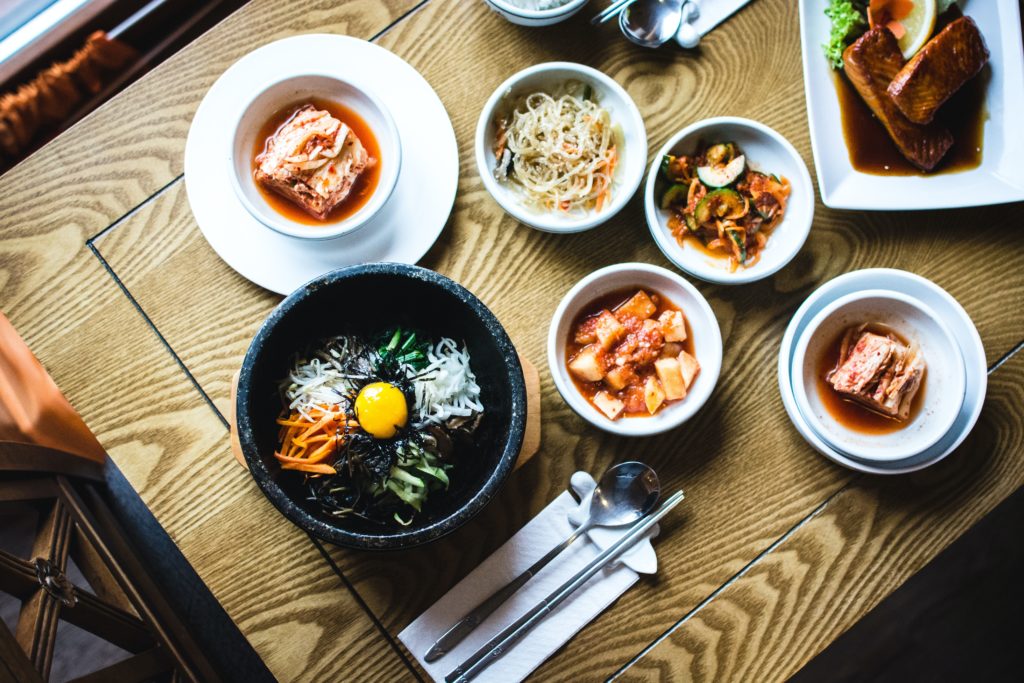
“Bibimbap” is an enticing feast for both the eyes and the palate. In Korea, this vibrant dish is commonly referred to as a mixed rice bowl. It typically features a bed of white rice, served in a sizzling stone bowl, adorned with an array of colorful vegetables, pork, eggs, and Gochujang (a spicy Korean sauce). Sliced beef and a sunny-side-up egg, either raw or fried, are popular and frequent additions to this delectable masterpiece.
Dubu-Jorim
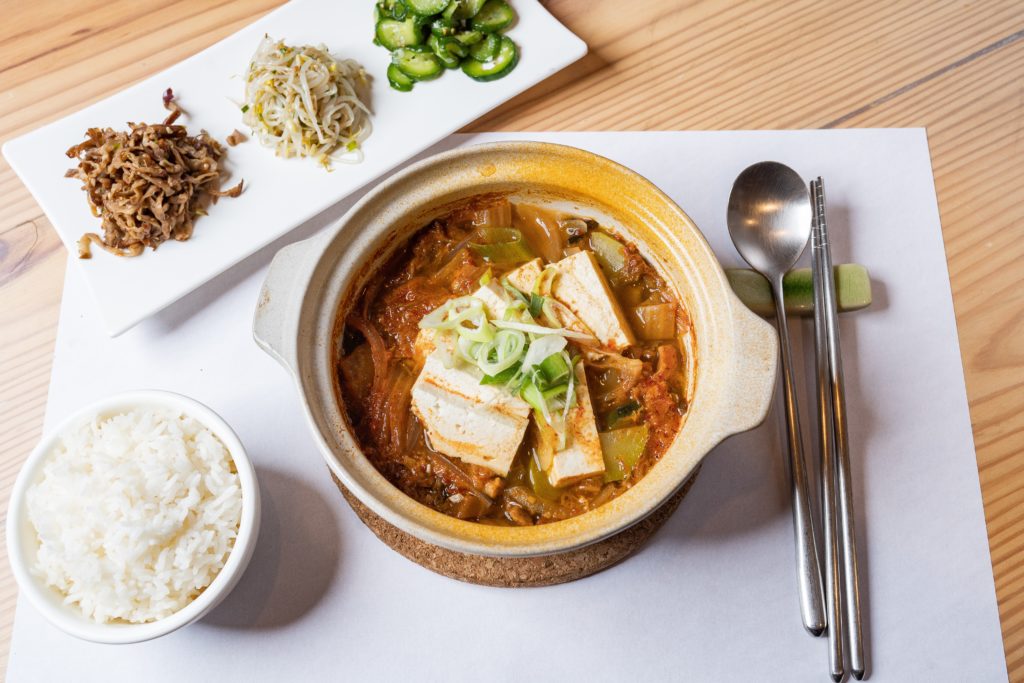
This beloved Korean delicacy revolves around its star ingredient – tofu. A blend of soy sauce, brown sugar, sesame oil, garlic, ginger, and additional spices is first used to marinade the chunks. Gradually, the tofu absorbs the richness of the marinade, transforming into tender morsels with a luscious glaze that is then expertly grilled. For those who relish a bit of spiciness, a dash of fiery chili powder can be added to “Dubu-Jorim,” creating a delightful balance of mild and zesty notes.
Galbi
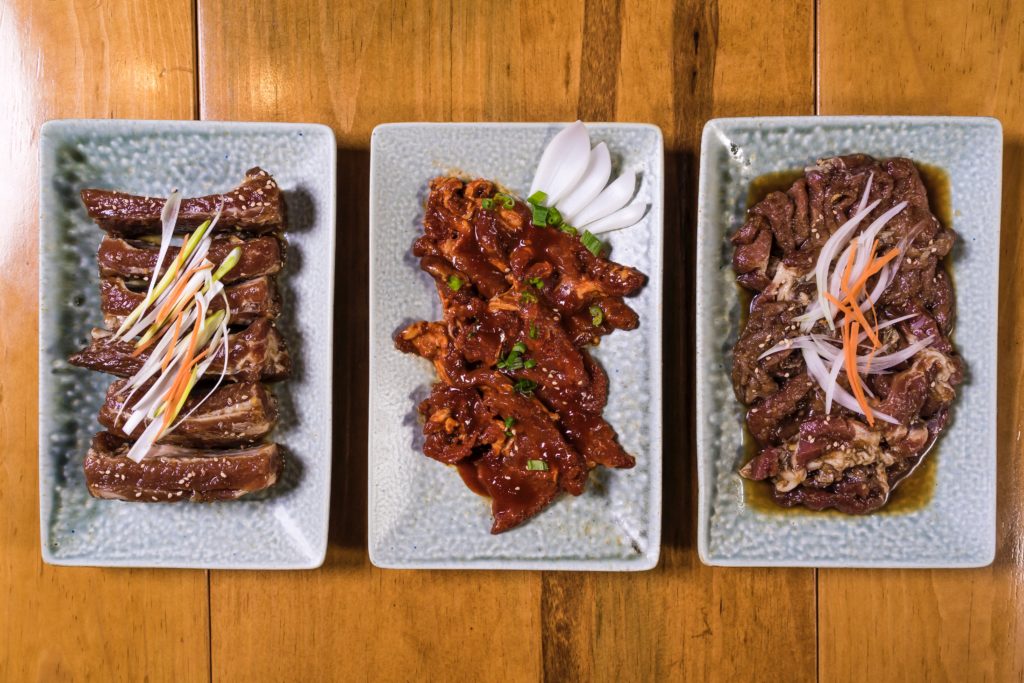
In other regions of the world, “galbi” is more commonly known as Korean barbecue. This delectable dish typically consists of beef or pork ribs, marinated in a flavorful blend of soy sauce, garlic, and sugar. When served, it is complemented by fresh lettuce leaves and slathered with “ssamjang,” a mouthwatering sauce made from fermented bean paste and red pepper paste. The unique aspect of Korean barbecue is that the ribs are cooked right at the table, providing a fun and interactive dining experience for everyone to enjoy.
A Guide To Eating Habits In Korea
Chopsticks and Spoons
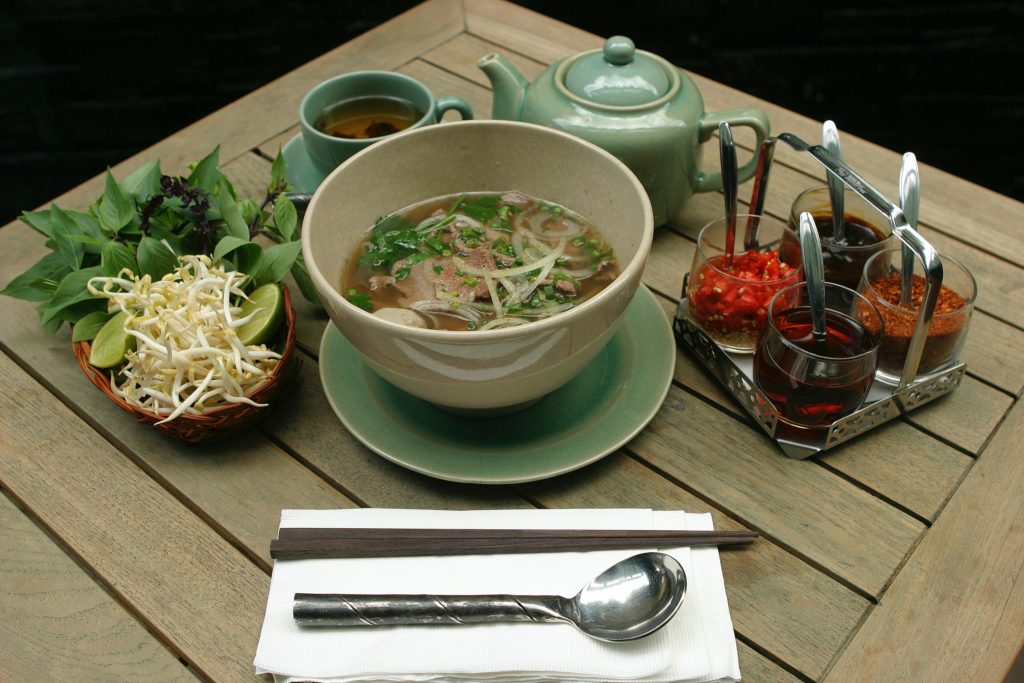
You should use a spoon in South Korea while eating rice, soup dishes, kimchi, etc. If you’re enjoying dishes that aren’t liquid-based, use chopsticks.
The procedure for these tools is intricate. Chopsticks must be placed on the right side of the food and positioned vertically, while the spoon must be set on the left side.
Basic etiquette dictates that after using one chopstick and the spoon, the other should be placed on the dining table. It’s improper to place chopsticks on utensils during a meal while they are not being used.
Speed and Placement

Korean people have the habit of setting the bowl on the dinner table and using a spoon to consume their food. This is perhaps because the majority of their tableware is made of stainless steel, which has a quick heat transfer. The elderly in particular are quite aware of this consciousness. Because the meal is far away or it is not feasible to consume, the younger generation in today’s society will occasionally take the rice bowl into their hands.
Explore Korean Cuisine with Jaya Travel!
Prepare to awaken your taste buds to the rich symphony of flavors that grace the Korean dining table! Whether you’re a seasoned enthusiast of Korean culture or a curious newcomer, this guide is your passport to the captivating realm of Korean cuisine.
Embark on this tantalizing voyage with Jaya as your trusted leader, and let the wonders of Korean gastronomy leave an indelible mark on your culinary journey. For more all-inclusive guides to global cuisine, check out our travel blog!

